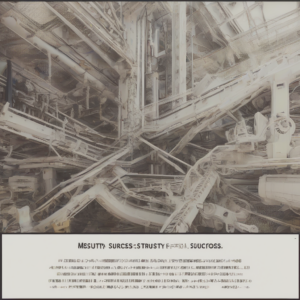Revving Up Sales: A Deep Dive into Automotive Marketing Strategies
The automotive industry is a dynamic and fiercely competitive landscape. Success hinges on employing innovative and effective marketing strategies that resonate with a diverse consumer base. This comprehensive guide explores a wide range of approaches, from traditional methods to cutting-edge digital tactics, to help automotive businesses achieve their sales goals and build lasting brand loyalty.
I. Understanding Your Target Audience: Segmentation and Personas
Before diving into specific strategies, a thorough understanding of your target audience is paramount. This involves market segmentation, identifying specific groups with shared characteristics, and developing detailed buyer personas. These personas represent ideal customers, encompassing their demographics, psychographics, lifestyle, needs, and motivations. This granular understanding informs every aspect of your marketing efforts, ensuring targeted messaging and optimal resource allocation.
- Demographic Segmentation: Age, gender, income, location, education, occupation, family status.
- Psychographic Segmentation: Lifestyle, values, interests, attitudes, personality traits.
- Behavioral Segmentation: Purchase history, brand loyalty, usage rate, response to marketing campaigns.
- Geographic Segmentation: Urban vs. rural, climate, population density.
II. Leveraging Digital Marketing Channels
The digital landscape offers a wealth of opportunities for automotive marketers. A multi-channel approach is crucial, utilizing various platforms to reach potential customers where they are most active.
A. Search Engine Optimization (SEO)
SEO involves optimizing your website and content to rank higher in search engine results pages (SERPs). For automotive businesses, this means targeting relevant keywords related to car models, features, services, and location. On-page optimization (website content, meta descriptions, title tags) and off-page optimization (link building, social media engagement) are essential components.
B. Pay-Per-Click (PPC) Advertising
PPC advertising, such as Google Ads, allows for targeted campaigns based on keywords, demographics, and location. This approach provides immediate visibility and drives qualified traffic to your website or dealership. Careful keyword selection and ad copywriting are crucial for maximizing ROI.
C. Social Media Marketing
Platforms like Facebook, Instagram, and YouTube offer powerful avenues to connect with potential customers. Visual content, such as high-quality photos and videos showcasing vehicles, is highly effective. Engaging content, contests, and influencer marketing can significantly boost brand awareness and engagement.
- Facebook: Targeted advertising, community building, event promotion.
- Instagram: Visually appealing content, influencer collaborations, user-generated content.
- YouTube: Video reviews, tutorials, behind-the-scenes content.
- TikTok: Short-form videos, trending challenges, viral marketing.
D. Email Marketing
Email marketing remains a powerful tool for nurturing leads and building customer relationships. Targeted email campaigns can promote special offers, new vehicle releases, service appointments, and other relevant information. Segmentation is key to ensuring personalized messaging and maximizing engagement.
E. Website Optimization
Your website serves as your digital storefront. It needs to be user-friendly, visually appealing, and mobile-responsive. High-quality product photography, detailed vehicle information, a streamlined online inventory, and a seamless online purchasing experience are essential.
III. Traditional Marketing Methods: Still Relevant in the Modern Era
While digital marketing dominates the landscape, traditional methods still hold significant value, especially when integrated with digital strategies.
A. Print Advertising
Print ads in relevant magazines, newspapers, and local publications can reach specific target demographics. Well-designed ads with compelling visuals and clear calls to action can be effective, particularly for reaching older demographics less active online.
B. Television and Radio Advertising
Television and radio advertising can build brand awareness and reach broad audiences. Targeted advertising during relevant programs can maximize impact. Creative and memorable ads are key to cutting through the noise.
C. Direct Mail Marketing
Targeted direct mail campaigns, such as brochures or postcards, can be effective in reaching specific customer segments. Personalized messaging and high-quality design are essential for maximizing engagement.
D. Sponsorships and Events
Sponsoring local events or participating in car shows can enhance brand visibility and build relationships with potential customers. This provides opportunities for direct interaction and showcasing vehicles in a tangible way.
IV. Content Marketing: Building Trust and Authority
Content marketing involves creating valuable and engaging content that attracts and retains customers. For automotive businesses, this could include blog posts, articles, videos, infographics, and other resources that provide information about cars, automotive technology, driving tips, and related topics.
- Blog Posts: Articles on car maintenance, buying guides, industry news.
- Videos: Vehicle reviews, test drives, behind-the-scenes dealership tours.
- Infographics: Data visualization of car performance, safety features, fuel economy.
- Ebooks and Guides: In-depth resources on car buying, maintenance, or specific car models.
V. Customer Relationship Management (CRM)
A robust CRM system is crucial for managing customer interactions and data. This allows for personalized communication, targeted marketing campaigns, and improved customer service. Tracking customer preferences, purchase history, and service records enables effective lead nurturing and relationship building.
VI. Leveraging Data and Analytics
Data analytics is essential for measuring the effectiveness of marketing campaigns and making data-driven decisions. Tracking key metrics such as website traffic, conversion rates, customer acquisition cost, and return on investment (ROI) provides valuable insights for optimizing marketing strategies.
VII. Building Brand Loyalty
Building strong brand loyalty is crucial for long-term success. This involves providing exceptional customer service, building a strong brand identity, and fostering a sense of community. Loyalty programs, personalized communication, and ongoing engagement are essential for retaining customers.
VIII. Adapting to Emerging Technologies
The automotive industry is constantly evolving, with emerging technologies such as electric vehicles (EVs), autonomous driving, and connected car technology. Marketers need to stay abreast of these trends and adapt their strategies accordingly. Highlighting the benefits of these new technologies in marketing campaigns is crucial to attracting a new generation of car buyers.
IX. Measuring and Optimizing Performance
Regularly monitoring and analyzing marketing campaign performance is crucial. Key Performance Indicators (KPIs) should be tracked and analyzed to identify areas for improvement. A/B testing different marketing materials and approaches helps optimize campaigns for maximum effectiveness. This iterative process allows for continuous refinement and improvement of strategies.
X. Ethical Considerations
Ethical considerations are paramount in automotive marketing. Transparency, honesty, and responsible advertising practices build trust with consumers. Avoiding misleading claims, respecting consumer privacy, and adhering to industry regulations are crucial for maintaining a positive brand image and avoiding potential legal repercussions.




